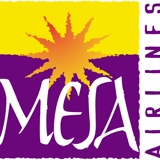Title Page
-
Customer's Name
-
Customers Address
-
Contact Name & Position
-
Date Audit was Conducted on
-
Document Prepared by
-
This Report Covers the 12 month period of
-
Summary of the customers dangerous goods transport activities for the 12 month period.
-
Document the dangerous goods by UN number & PSN that are stored, consigned, or carried by the customer.
-
Fleet size & type(s) operated by the company.
-
Method of carriage (packages, tanks, bulk)
-
Have any prohibition or improvement notices been issued in the 12 month period?
Company Systems and Procedures
Personnel
-
Have the persons employed, involved in the carriage of dangerous goods, been trained in accordance with chapter 1.3, or 1.8.3 or, chapter 8.2 as applicable?
-
Are there records of employee training?
-
Are there any procedures in place for auditing employees and processes in relation to the handling, storing, or transportation of dangerous goods?
-
Inspect and review the company's systems and procedures for dangerous goods transport compliance, in particular those relating to: Personnel
Products
-
Are there procedures in place for the identification of dangerous goods being transported?
-
Types of products concerned
-
Inspect and review the company's systems and procedures for dangerous goods transport compliance, in particular those relating to: Products
Vehicles & Equipment
-
Are there records of equipment checks and maintenance, i.e., COA, defect reports, tank testing reports, etc.
-
Inspect and review the company's systems and procedures for dangerous goods transport compliance, in particular those relating to: Vehicles & Equipment
Accidents & Emergencies
-
Have any accidents/ incidents occurred in the 12 month period that involved dangerous goods?
-
Are there procedures in place to avoid recurrence of accidents, incidents, or non-compliances?
-
Are there emergency procedures in place for the event of any accident or incident that may affect safety during the carriage, loading, or unloading of dangerous goods?
-
Inspect and review the company's systems and procedures for dangerous goods transport compliance, in particular those relating to: Accidents and Emergencies
-
Report any accidents/ incidents to the competent authority (where relevant).
Security
-
Is there a security plan in place in accordance with chapter 1.10?
-
Inspect and review the company's systems and procedures for dangerous goods transport compliance, in particular those relating to: Security Provisions
Subcontractors
-
Are subcontractors used by the customer?
-
Are subcontractors audited to ensure that they are compliant with ADR requirements?
-
Inspect and review the company's systems and procedures for dangerous goods transport compliance, in particular those relating to: Subcontractors
Documentation (See ADR Chapter 5.4)
-
Inspect and review the company's systems and procedures for dangerous goods transport compliance, in particular those relating to: Load Documentation & Correct Information
Records
-
Inspect and report on: Training, vehicle and tank records
-
Inspect and report on: Classification, Product Containment, Marking and Labelling
-
Inspect and report on: Storage
-
Inspect and report on: Spillages
Vehicle & Driver Compliance
-
Does the driver have their ADR card on their person?
-
Documentation - Check the drivers load paperwork and ensure that it contains the UN number, PSN, PG & Tunnel Code
-
Does the vehicle have enough fire extinguisher medium for the intended load? Minimum of 2 Kgs must be in the cab. Check the next due service date, ensure that extinguisher is in pressure, that there is a safety pin fitted and that the pin is secured with an easy release seal.
-
Does the driver have an intrinsically safe torch, goggles (not glasses), gloves (suitable for the goods being carried) and a hi vis vest/ jacket as per ADR Regulations?
-
Is the Certificate of Approval available and in date?
-
Does the vehicle have 2 warning triangles?
-
Does the vehicle have 2 eye wash bottles? A minimum of 900ml is required, in date and unopened.
-
Does the vehicle have 2 wheel chocks? (1 if a rigid vehicle, 2 for unit & trailer)
-
Does the vehicle have an anti-static plastic shovel?
-
Does the vehicle have a drain seal? Check that it is not hard and breaking apart. It can be out of date, but must still malleable.
-
Does the vehicle have a plastic collecting container?
-
Does the driver have Instructions in Writing? Must have all 4 pages (or 2x double sided)
-
Are Hazchem boards clean and legible?
-
Is the Hazchem Panel showing the correct information?
-
Is the Orange Kemlar Plate on display?
Summary
-
Is the customer compliant?
-
Recommendations
-
Advisor's Name
-
Advisor's Certificate Number, Date of Issue & Modes Valid for











